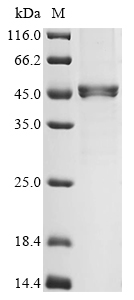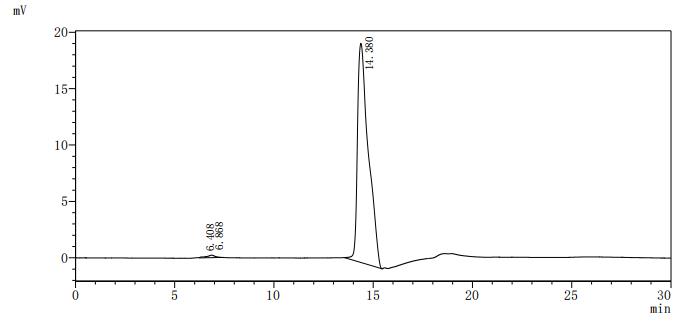The recombinant Human ACTC1 was expressed with the amino acid range of 3-377. This ACTC1 protein is expected to have a theoretical molecular weight of 47.4 kDa. This ACTC1 protein is produced using baculovirus expression system. The ACTC1 coding gene included the C-terminal 6xHis tag, which simplifies the detection and purification processes of the recombinant ACTC1 protein in following stages of expression and purification.
The human actin, alpha cardiac muscle 1 (ACTC1) is a cardiac muscle-specific isoform of actin, which is a key component of the cytoskeleton and essential for muscle contraction. ACTC1 is predominantly expressed in the heart and contributes to the structural and functional integrity of cardiac muscle fibers. As a major constituent of sarcomeres, ACTC1 interacts with myosin to generate the contractile force required for cardiac muscle function. Mutations in ACTC1 are associated with various cardiac disorders, including hypertrophic and dilated cardiomyopathies. Understanding the role of ACTC1 in cardiac physiology and pathology is crucial for elucidating the molecular mechanisms underlying heart-related conditions and developing targeted therapeutic interventions.





